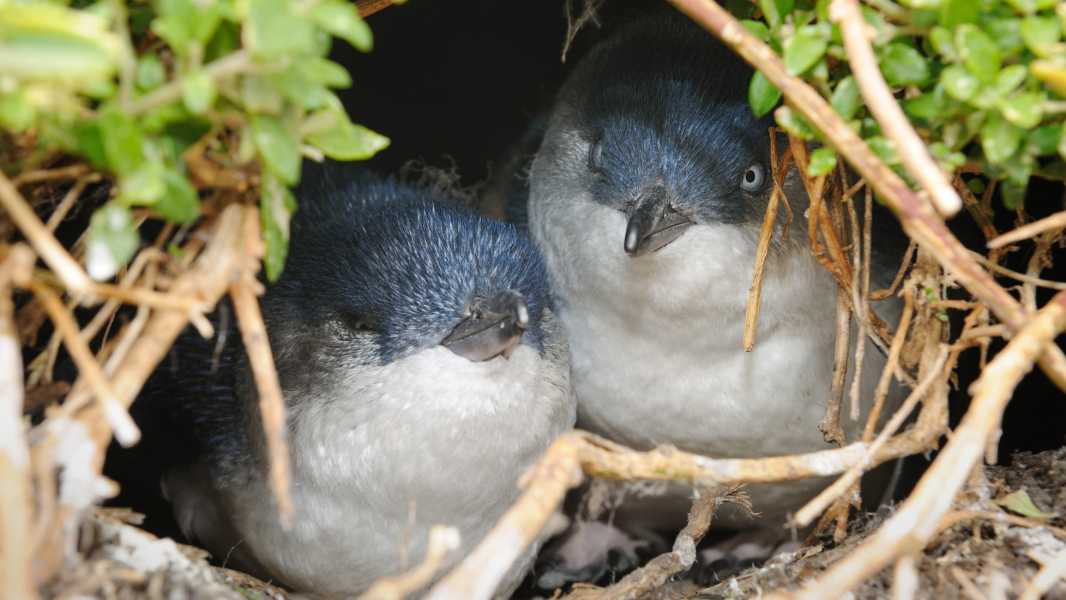
Little penguins in a nest in Australia. (Photo credit: 4FR via Getty Images)
A recent study has found that little penguins “divorce” their partners in search of more suitable mates, but they spend so much time courting new mates that it has a negative impact on the entire colony.
There is a misconception that penguins mate for life – their breeding behaviour is more complex and varies between species. Little penguins (Eudyptula minor) often return to the same partner each breeding season, but some leave their mates to find new ones, which scientists call “penguin divorce”.
A new study published Jan. 11 in the journal Ecology and Evolution found that these divorces are a reliable indicator of the colony’s overall health. A team led by researchers at Monash University in Australia studied how environmental and social factors, including divorces, affected reproductive success over 13 breeding seasons on Phillip Island in Australia, home to 37,000 little penguins — the world’s largest colony.
Divorce (or lack thereof) was the best predictor of reproductive success; more offspring were produced in seasons with low divorce rates, the study found. But that doesn't mean faithful couples stayed faithful.
“In good times, they generally stay with their partners, although cases of infidelity often occur,” study co-author Richard Reyna, head of the ecophysiology and conservation research group at Monash University in Australia, said in a statement. “However, after an unsuccessful breeding season, they may try to find a new partner the following season to improve their chances of successful reproduction.”
The researchers speculate that penguins separate for a variety of reasons, including reproductive problems and environmental stress, which can make penguin pairs less stable. In the long term, separation may improve reproductive outcomes by allowing penguins to find more compatible or “higher quality” mates, the study authors say.
However, when multiple penguins breed in one season, it creates difficulties for the colony. Separated penguins have to spend time searching for new partners and courting, which delays breeding. The study authors also noted that there is a risk of “lack of breeding acquaintances” and “reduced reproductive efficiency” in the early stages of new mating. In other words, new pairs are not as effective at reproducing and producing offspring as those who have spent more time together.
Hundreds of divorces
In the new study, Reina and his colleagues monitored a site known as Penguin Parade on the western side of Phillip Island, where tourists can watch penguins return from the ocean to their nests. The team recorded nearly 250 divorces among the roughly 1,000 pairs in the study, with higher divorce rates during less productive breeding seasons and lower rates during more successful breeding seasons.
The team found that other factors were not as reliable or consistent in predicting reproductive success. The time penguins spent foraging affected reproduction, but differently depending on whether the penguins hatched from eggs, while environmental factors such as sea surface temperature had no significant effect in the study. The authors noted that their findings highlight the need for a holistic approach to studying seabird reproductive success that takes into account individual behavior and social dynamics alongside environmental factors.
“Our results also suggest that monitoring breeding events could be a valuable non-invasive tool for tracking reproductive trends in seabirds, particularly in populations facing variable environmental conditions,” the study authors emphasize.
Sourse: www.livescience.com





